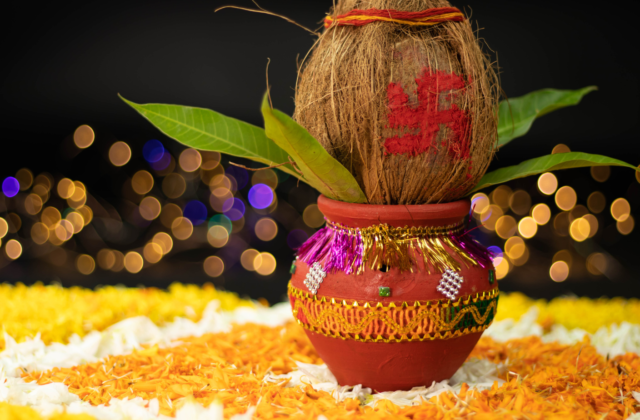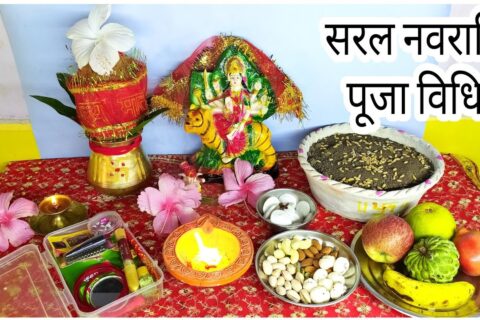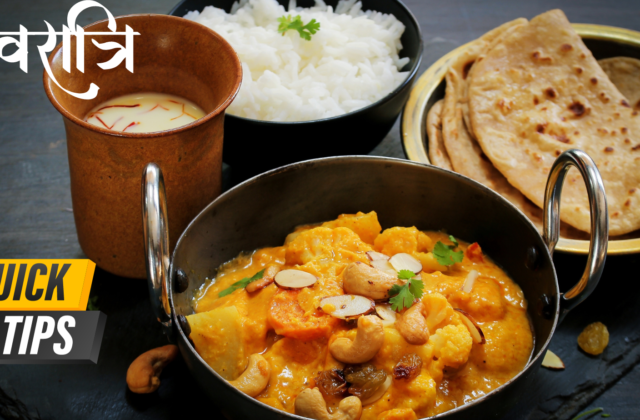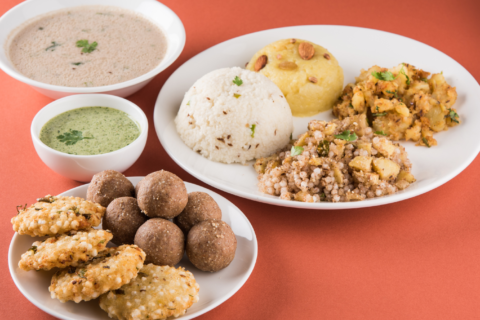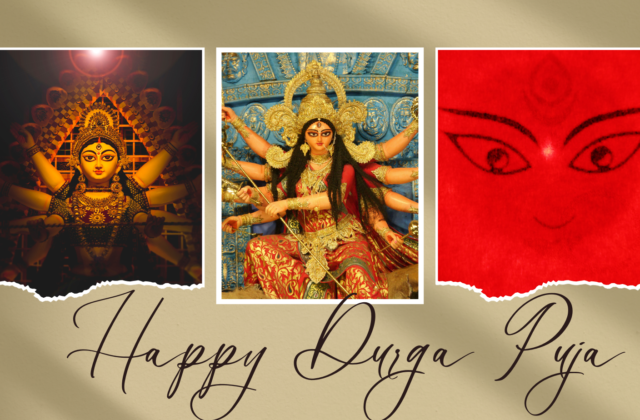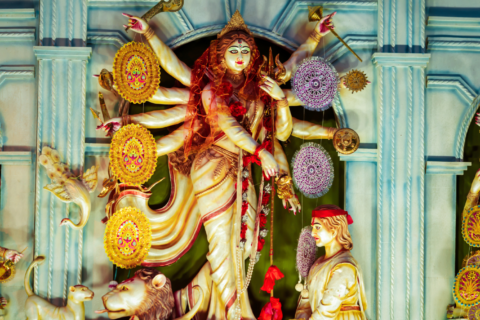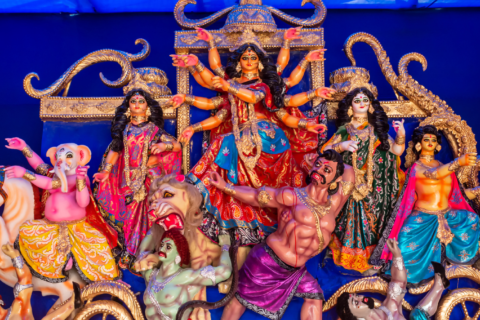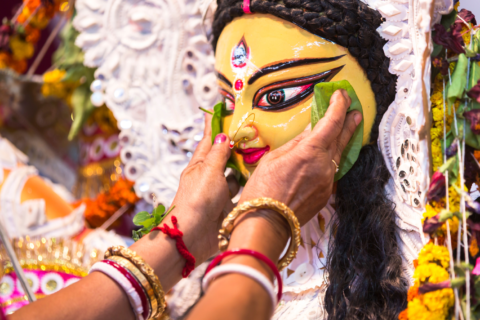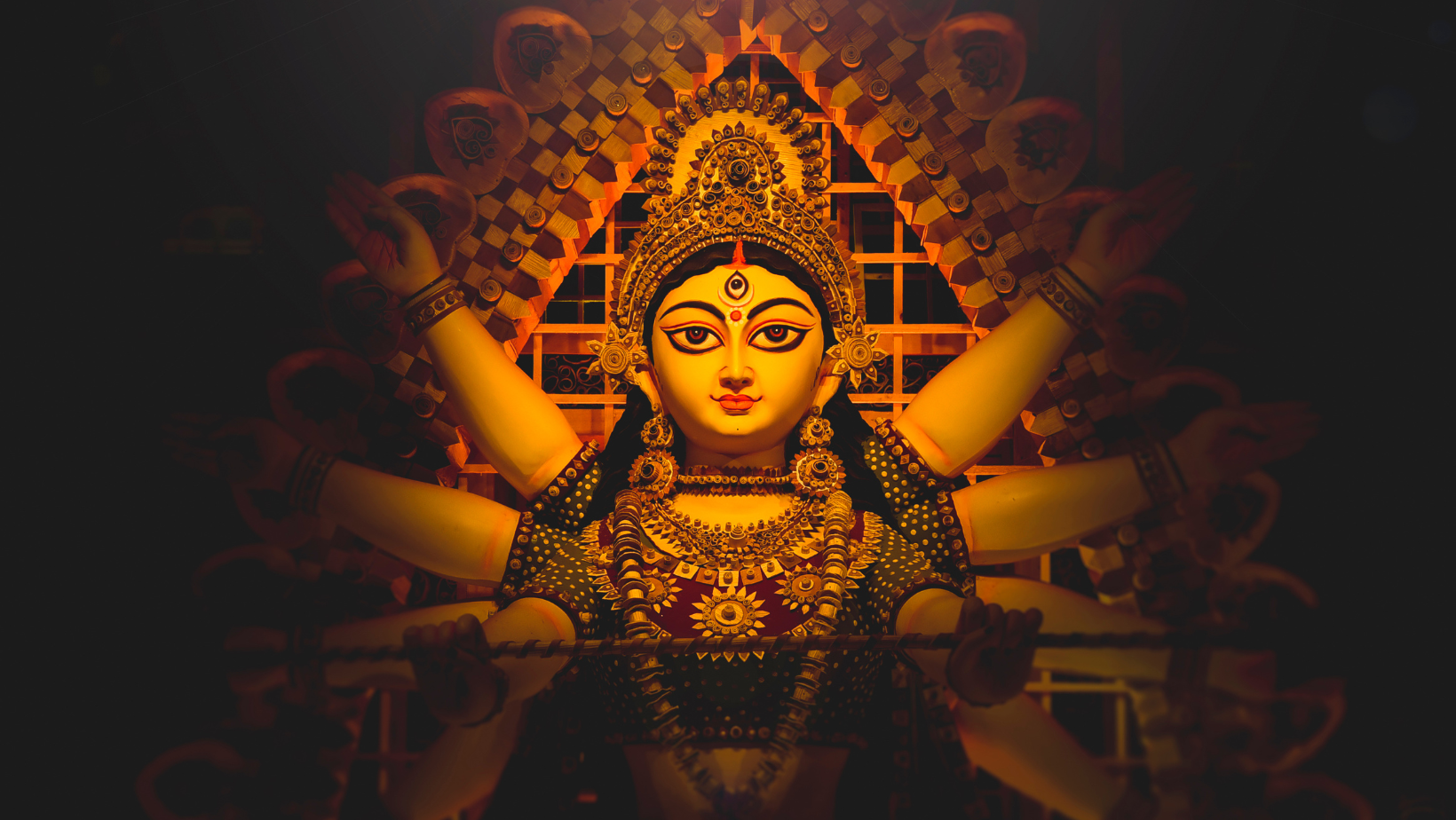
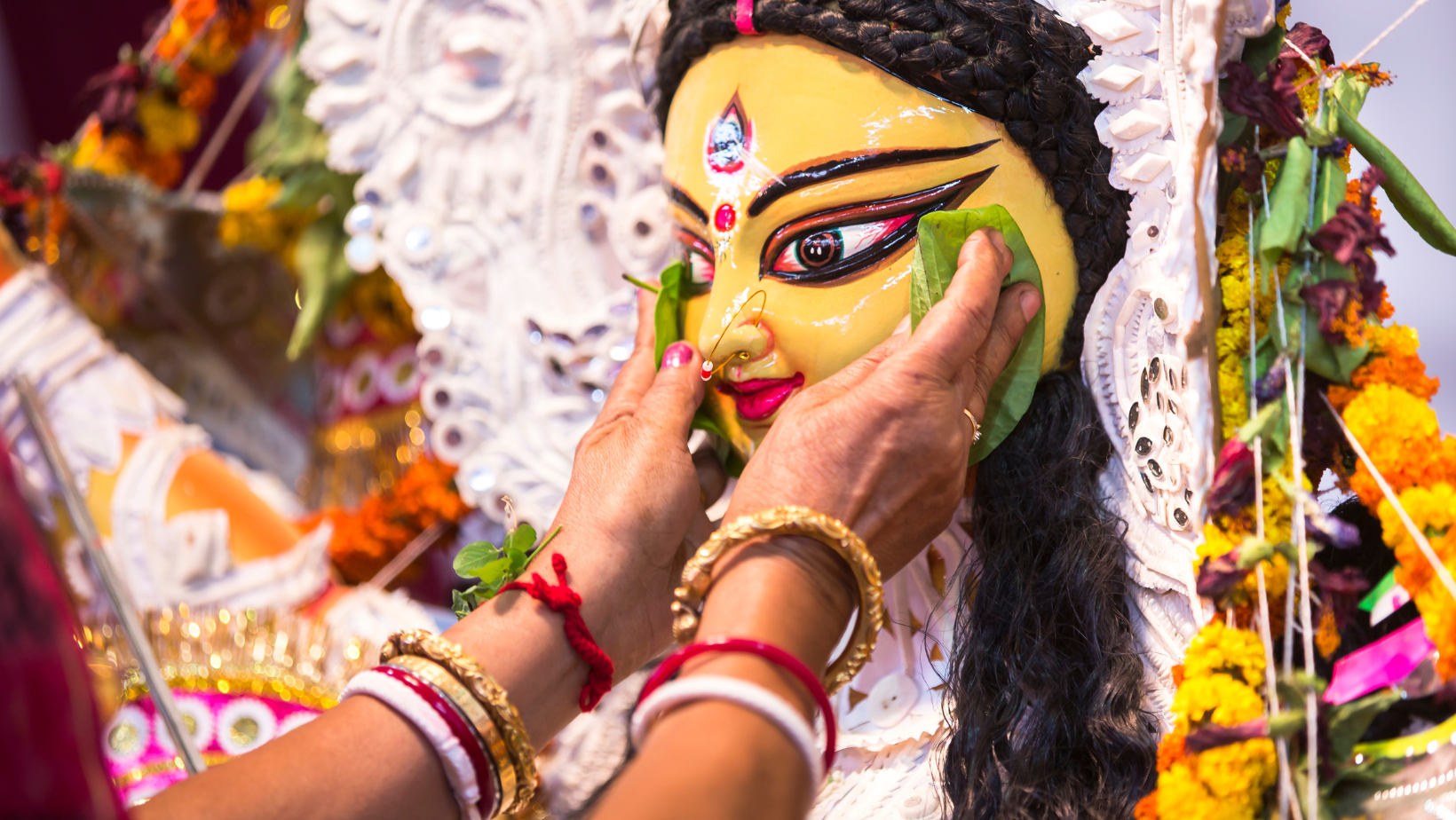
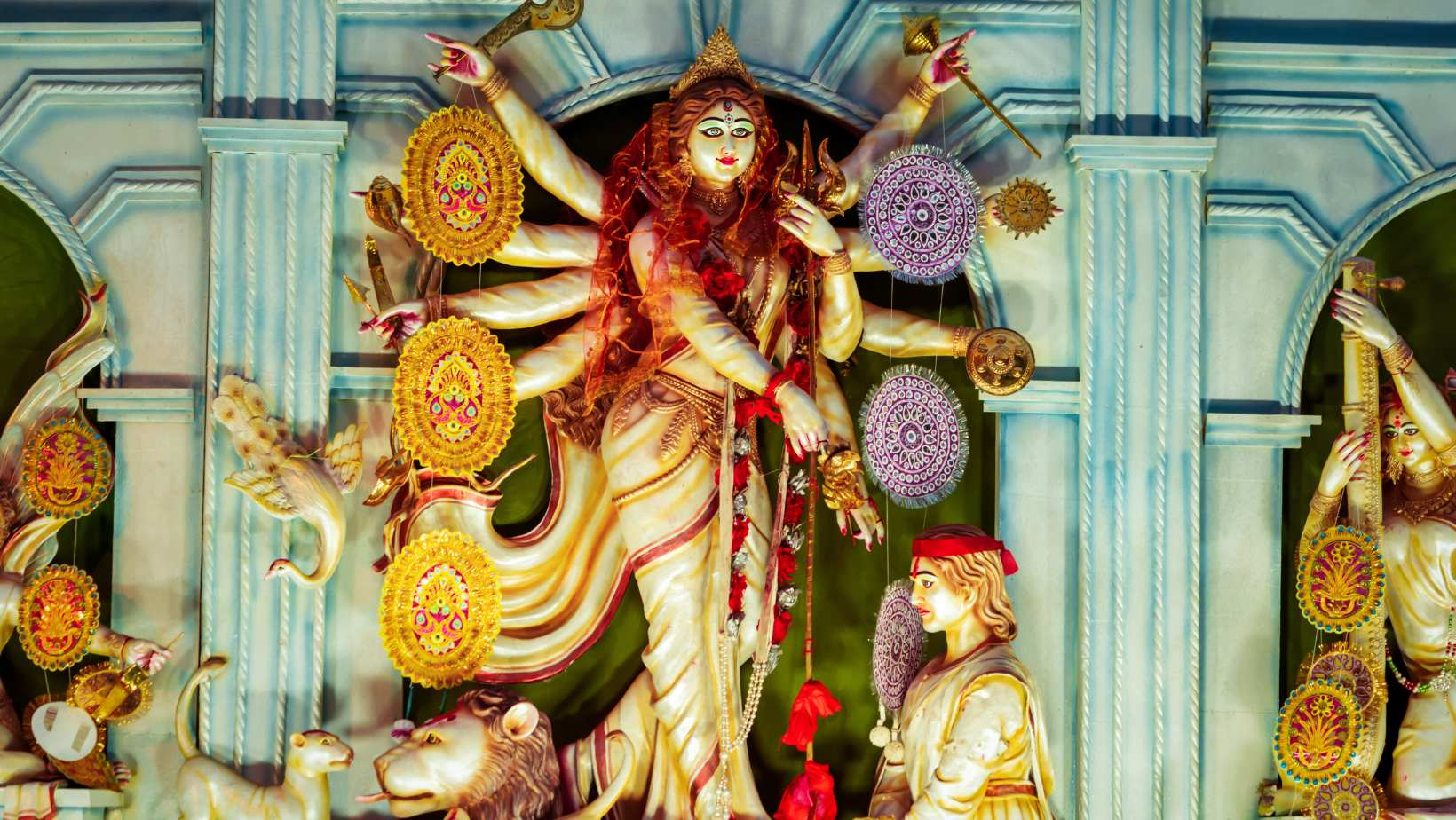

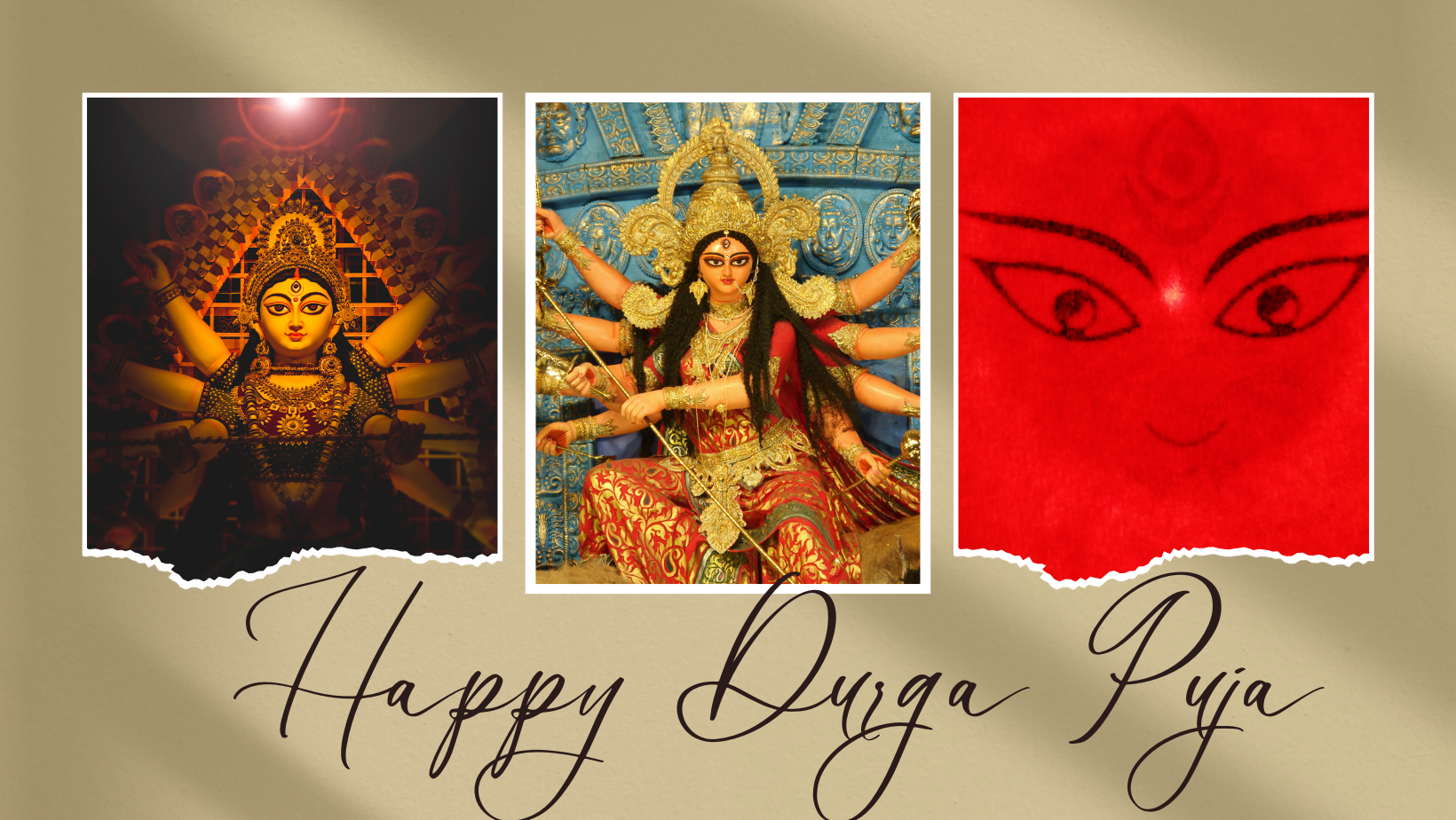
Navratri is a vibrant and auspicious festival celebrated with great enthusiasm across India and among Hindu communities worldwide. It is dedicated to the worship of Goddess Durga and her various forms. The festival spans nine nights and is observed in the Hindu month of Ashwin, which typically falls in September or October.
This year, Navratri is set to begin on Sunday, October 15, and will end on Tuesday, October 24. Each form of the goddess is revered during different days of the festival. The tenth day, known as Vijayadashami or Dussehra, marks the triumph of good over evil.
Rituals and Celebrations
Navratri is a time of vibrant celebrations, colorful attire, music, dance, and religious rituals. Devotees observe fasts, perform aarti (prayer), sing devotional songs (bhajans), and participate in traditional dances such as Garba and Dandiya. These dances are performed in groups with rhythmic movements and colorful costumes.
Nine Colors of Navratri
Each day of Navratri is associated with a specific color that holds symbolic significance. Here are the colors for each day:
-
Day 1 (October 15):
Orange is the color of energy and happiness. It is associated with the goddess Shailputri, who is the daughter of the Himalayas and the first form of Durga.
-
Day 2 (October 16):
White is the color of purity and innocence. It is associated with the goddess Brahmacharini, who is the second form of Durga and is known for her devotion to Brahma.
-
Day 3(October 17):
Red is the color of power and passion. It is associated with the goddess Chandraghanta, who is the third form of Durga and is known for her lion mount.
-
Day 4(October 18):
Royal blue is the color of wisdom and knowledge. It is associated with the goddess Kushmanda, who is the fourth form of Durga and is known for creating the universe with her smile.
-
Day 5 (October 19):
Yellow is the color of prosperity and abundance. It is associated with the goddess Skandamata, who is the fifth form of Durga and is known for being the mother of the war god Skanda.
-
Day 6 (October 20):
Green is the color of nature and new beginnings. It is associated with the goddess Katyayani, who is the sixth form of Durga and is known for her fierce battle against the demon Mahishasura.
-
Day 7 (October 21):
Grey is the color of balance and transformation. It is associated with the goddess Kalaratri, who is the seventh form of Durga and is known for her dark and destructive form.
-
Day 8 (October 22):
Peacock green is the color of beauty and grace. It is associated with the goddess Mahagauri, who is the eighth form of Durga and is known for her radiant skin.
-
Day 9 (October 23):
Pink is the color of love and compassion. It is associated with the goddess Siddhidatri, who is the ninth and final form of Durga and is known for granting all wishes.
Navratri Puja
How To Do Navratri Puja At Home
How To Do Navratri Puja At Home? A Step-by-Step Guide with Relevant Mantras Navratri is a nine-day Hindu festival that celebrates the victory of good…
Navratri Puja Vidhi: A Step-by-Step Guide to Worshipping Goddess Durga
Navratri Puja Vidhi नवरात्रि पूजा विधि: घर पर नवरात्रि पूजा कैसे करें? नवरात्रि हिंदू धर्म…
Essential Navratri Puja Samagri: Your Complete Checklist
Navratri Puja Samagri नवरात्रि पूजा सामग्री की पूरी सूची: घर पर नवरात्रि पूजा करने के…
A Step-by-Step Guide to Performing Aarti during Navratri
Navratri Aarti नवरात्रि में आरती कैसे करें: एक आसान गाइड Navratri Aarti is a sacred…
How Navratri is celebrated in India?
Navratri is celebrated with great enthusiasm in different parts of India, showcasing the country’s rich cultural diversity. Here’s a glimpse of how Navratri is celebrated across various regions:
Northern India:
In North India, Navratri is celebrated as the victory of Lord Rama over the evil king Ravana. It culminates in the celebrations of the Ramlila, which is enacted ceremoniously during Dussehra. The effigies of Ravana and Kumbhakarna are burnt to symbolize the victory of good over evil.
Western India:
In Gujarat, Navratri is synonymous with vibrant dance forms like Garba and Dandiya-Raas. Garba is a graceful dance performed by women in circles around a pot containing a lamp, while Dandiya-Raas involves men and women dancing with small, decorated bamboo sticks called dandiyas.
Eastern India:
In West Bengal, Navratri coincides with Durga Puja, a grand celebration dedicated to Goddess Durga. Elaborate pandals (temporary structures) are created to house beautifully crafted idols of the goddess. People visit these pandals to seek blessings and enjoy cultural performances.
Southern India:
In South India, Navratri is celebrated as Golu or Bommai Golu in Tamil Nadu and Bombe Habba in Karnataka. It involves arranging dolls and figurines on steps or shelves, depicting various mythological stories and scenes from daily life. People invite friends and family to their homes to view the Golu display.
Other Regions:
Navratri is celebrated in various other ways across India. People observe fasts, perform special prayers, organize devotional music and dance events, and participate in community gatherings. The festival serves as an occasion for people to come together, celebrate, and seek blessings from the divine.
Navratri is a joyous celebration that brings people together to honor the divine feminine energy and seek blessings from Goddess Durga. It is a time to immerse oneself in devotion, music, dance, and cultural festivities that illuminate the spiritual landscape.
Goddess Durga is revered in diverse forms during Navratri, embodying various aspects of feminine energy and virtues. According to Hindu mythology, these nine forms are collectively known as Navadurga. Let’s delve into the significance of each form:
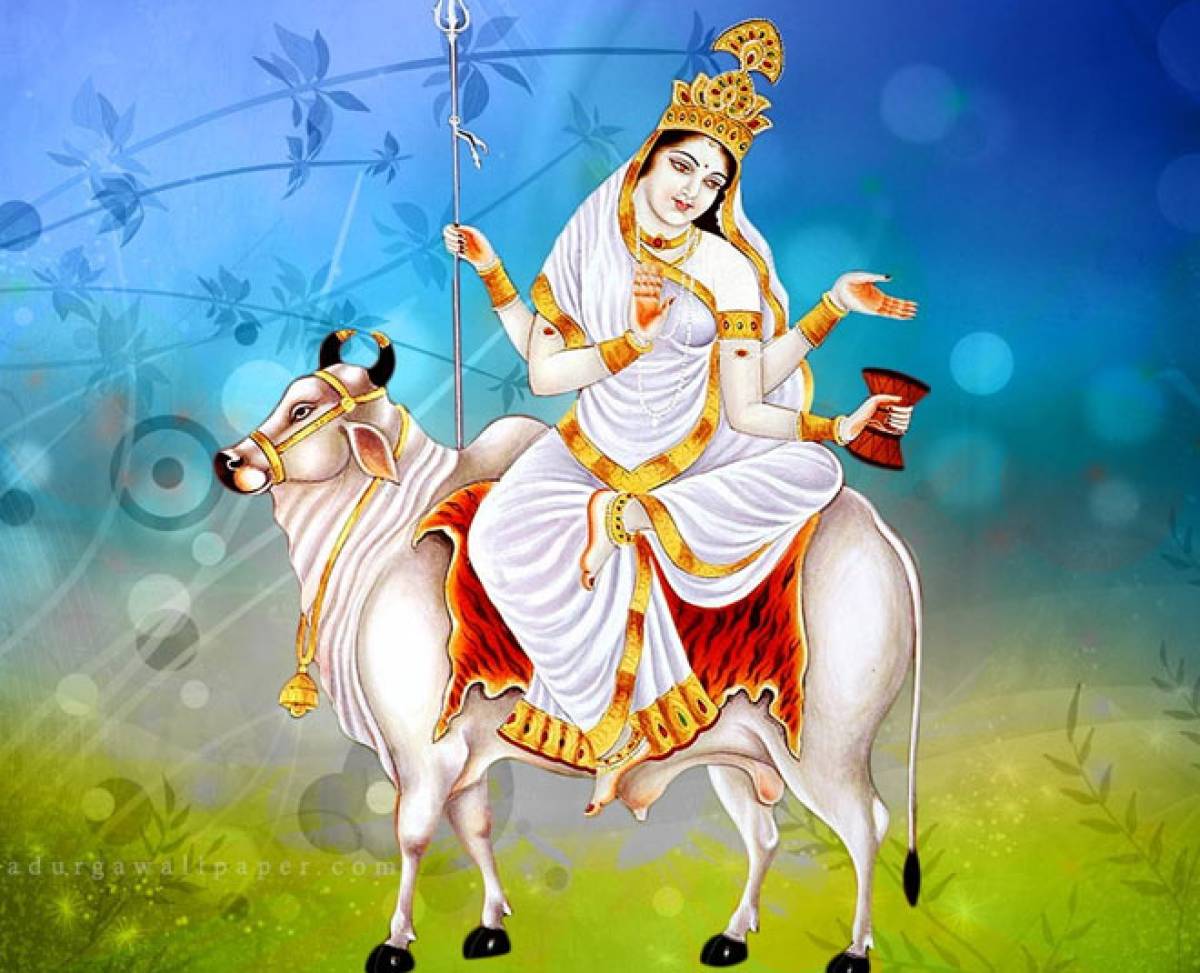
Goddess Shailputri
The initial form of Goddess Durga, also referred to as Sati Bhavani, Parvati, or Hemavati. She is the daughter of Hemavana, the king of the Himalayas. Her depiction includes riding a bull while holding a trident and a lotus blossom. The mantra is “ॐ देवी शैलपुत्र्यै नमः॥”

Goddess Brahmacharini
The second form, named after her practice of devout austerity. She carries a rosary in her right hand and a water utensil in her left. The mantra is “ॐ देवी ब्रह्मचारिणी नमः॥”

Goddess Chandraghanta
Representing peace, tranquility, and prosperity, this third form boasts a golden bright complexion and rides a lion. Her forehead is adorned with a half-moon shaped like a bell. The mantra is “ॐ देवी चन्द्रघण्टायै नमः॥”
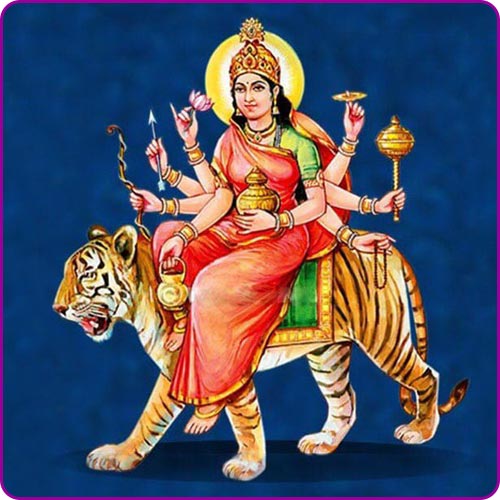
Goddess Kushmanda
The fourth form, often referred to as the "creator of the universe." She possesses multiple limbs (usually eight or ten) and wields various weapons, glitter, a rosary, and other holy objects.The mantra is “ॐ देवी कूष्माण्डायै नमः॥”
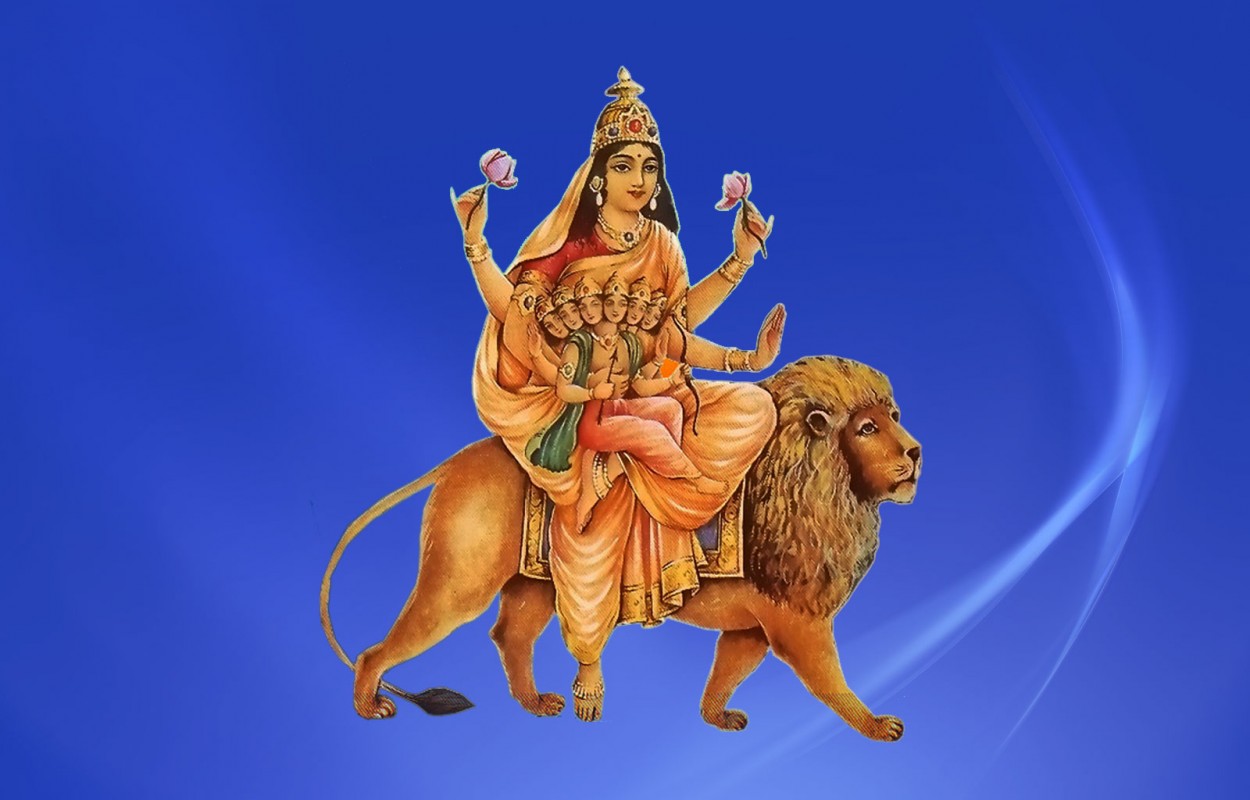
Goddess Skandamata
The fifth form, also known as Padmasana, is depicted holding her son Skanda (Kartikeya) on her lap. On the fifth day of Navratri, the mantra for Goddess Skandamata is recited. The mantra is “ॐ देवी स्कन्दमातायै नमः॥”
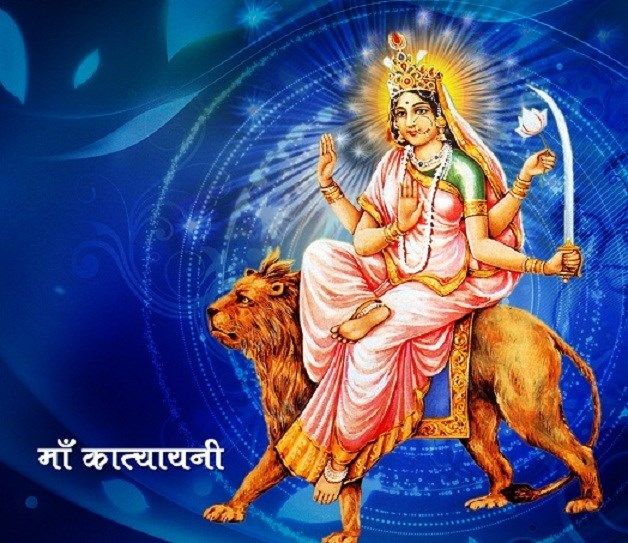
Goddess Katyayani
The sixth form, known as Mahishasura Mardini, wields a sword and rides a lion. On the sixth day of Navratri, the mantra for Goddess Katyayani is recited. The mantra is “ॐ देवी कात्यायन्यै नमः॥”

Goddess Kalaratri
The seventh form, also known as Shubankari, has dark skin and hair, adorned with a garland made of human skulls around her neck. On the seventh day of Navratri, the mantra for Goddess Kalaratri is recited. The mantra is “ॐ देवी कालरात्र्यै नमः॥”
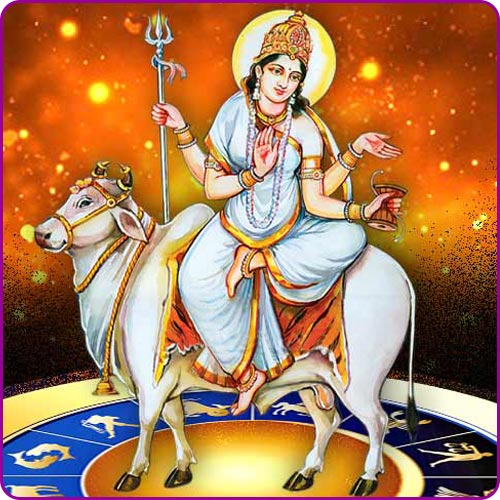
Goddess Mahagauri
This eighth form, known as Annapurna or Sandhya, has four arms and holds a trident and a drum. On the eighth day of Navratri, the mantra for Goddess Mahagauri is recited. The mantra is “ॐ देवी महागौर्यै नमः॥”

Goddess Siddhidatri
The ninth form, also known as Ardhanarishvara or Mahalakshmi, possesses four arms and is depicted holding a lotus flower and a mace. : On the ninth and final day of Navratri, the mantra for Goddess Siddhidatri is recited. The mantra is “ॐ देवी सिद्धिदात्र्यै नमः॥”
These nine forms of Goddess Durga collectively symbolize various virtues, including purity, strength, wisdom, courage, compassion, and creativity. They are revered during Navratri, showcasing the multifaceted aspects of the divine feminine energy.
During Navratri, devotees recite different mantras to invoke the blessings of Goddess Durga. Here are some of the mantras recited on each day of Navratri
Navratri Fast
Navratri Fasting Rules and Tips
Navratri Fasting Rules and Tips Navratri Fasting Rules: Navratri is a nine-day Hindu festival that celebrates the victory of good over evil. It is a…
Navratri Fast: Everything You Need to Know
Navratri Fast: Food Guide Navratri is a nine-day Hindu festival that celebrates the victory of…
Energize Your Navratri Fast with These Must-Try Food Choices
What to Eat in Navratri Fast? During Navratri fasting, there are certain food restrictions and…
Navratri Wishes / Navratri staus Messages
15 Powerful Happy Navratri Wishes
Navratri is one of the most auspicious and revered Hindu festivals, celebrated twice a year – once in spring and once in autumn. It is…
Happy Ashtami Wishes
Happy Ashtami Wishes On this auspicious day, it is customary to exchange greetings and wishes…
Happy Mahalaya Wishes
15 Happy Mahalaya Wishes to Spread Joy and Blessings Mahalaya is the first day of…
Top 15 Subho Bijoya Wishes
Subho Bijoya Wishes in English Subho Bijoya is a Bengali greeting that means “Happy Victory.”…
What is the history of Navratri?
Navratri is a Hindu festival that has its origins in the Vedic period of ancient India. It was originally a harvest festival celebrated to mark the end of the summer season and the beginning of the winter season. Over time, it has evolved into a religious festival widely celebrated by Hindus all over the world.
The word “Navratri” means “nine nights” and is celebrated to honor the Mother Goddess Durga. Throughout this period, Mother Goddess Durga is worshiped in all of her divine forms, including Goddess Durga, Goddess Kali, Goddess Saraswati, and Goddess Lakshmi. It is one of the most significant Hindu Festivals, celebrated twice a year. One at the onset of summer in March or April, which is known as “Chaitra Navratri.” The second Navratri is celebrated in September or October and is known as “Sharad Navratri.”
During Navratri, devotees observe fasts, perform aarti (prayer), sing devotional songs (bhajans), and participate in traditional dances such as Garba and Dandiya. These dances are performed in groups with rhythmic movements and colorful costumes.
Navratri’s Historical Background
Navratri, a significant Hindu festival, finds its roots in the Vedic period of ancient India. Initially, it emerged as a harvest festival, marking the transition from the summer season to winter season1. With the passage of time, it transformed into a religious celebration cherished by Hindus worldwide.
The Essence of “Navratri”
The term “Navratri” itself conveys its essence, translating to “nine nights.” This festival is a tribute to the Mother Goddess Durga. Throughout these nine nights, devotees venerate Mother Goddess Durga in her various divine manifestations, including Goddess Durga, Goddess Kali, Goddess Saraswati, and Goddess Lakshmi2. Navratri holds exceptional significance in Hindu culture and is celebrated twice annually. The first, “Chaitra Navratri,” occurs during the onset of summer, usually in March or April. The second, “Sharad Navratri,” takes place in September or October2.
Navratri Celebrations
Navratri is a time of fasting, prayer, devotional singing (bhajans), and engaging in traditional dances like Garba and Dandiya3. These dances are performed collectively, characterized by rhythmic movements and vibrant, culturally rich attire.

